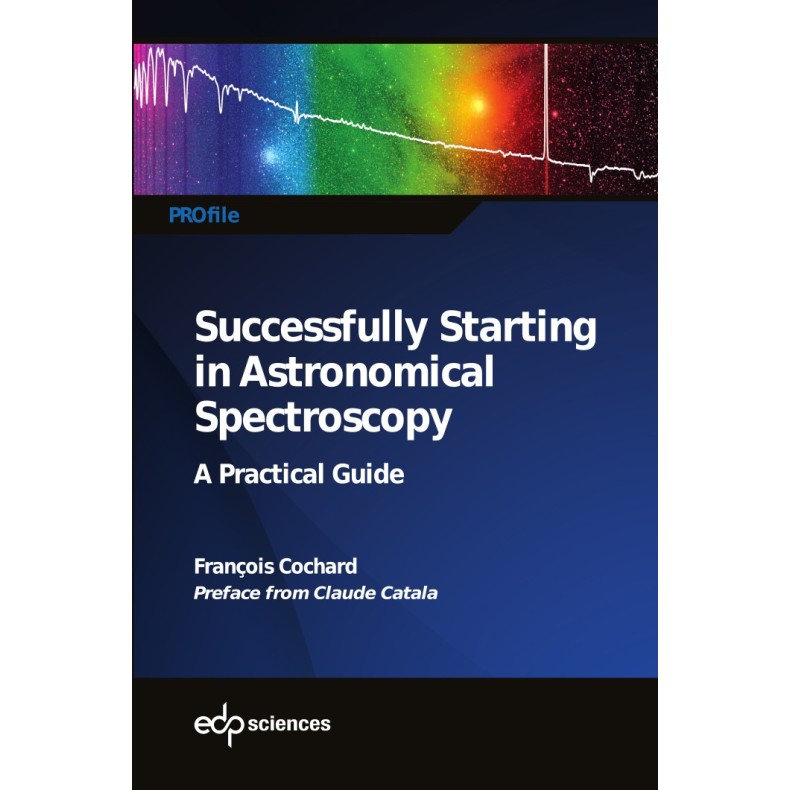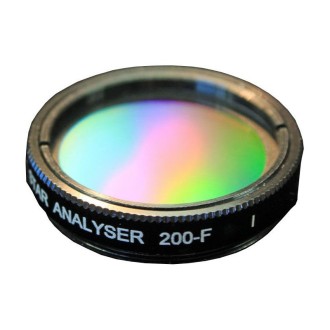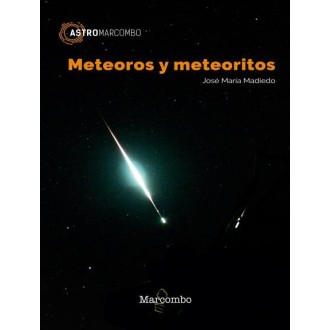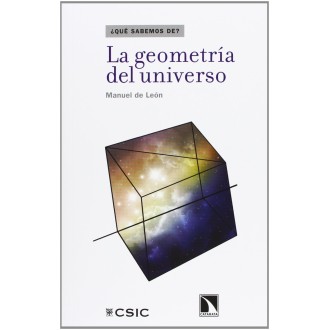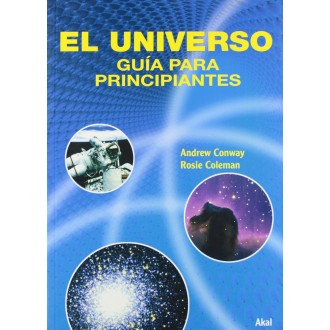Entrega 2/5 días

Succesfully Starting in Astronomical Spectroscopy
El primer manual práctico para iniciarte en Espectroscopía astronómica. El autor, François Cochard, es uno de los mayores expertos en espectroscopía de Europa y con este libro se pone "luz" para que todos los astrónomos aficionados puedan también iniciarse exitosamente en el campo de la espectroscopía.
| Transportista | Descripción | Entrega Estimada | ||
|---|---|---|---|---|
 |
MRW - Estándar | Entrega a domicilio - Estándar |
viernes, 2 enero - lunes, 5 enero |
|
 |
MRW - Sábado | Entrega a domicilio - Sábado |
sábado, 3 enero |
|
 |
MRW - Urgente | Entrega a domicilio - Urgente |
viernes, 2 enero |
|

MRW - Estándar
Entrega a domicilio - Estándar
Fecha de entrega estimada:
viernes, 2 enero - lunes, 5 enero

MRW - Sábado
Entrega a domicilio - Sábado
Fecha de entrega estimada:
sábado, 3 enero

MRW - Urgente
Entrega a domicilio - Urgente
Fecha de entrega estimada:
viernes, 2 enero
Succesfully Starting in Astronomical Spectroscopy - A Practical Guide.
Manual práctico para iniciarse exitosamente en la espectroscopía astronómica.
Este libro ha sido escrito por el autor francés, François Cochard. A parte de ser uno de los mayores expertos de Europa en este campo de observación también es el fundador de la empresa Shelyak Instruments que destaca por tener un amplio y variado rango de espectroscopios para distintos tipos de observación (con telescopio, solar, etc).
El libro que aquí presentamos en primícia para España sólo se edita en la actualidad en Inglés o en Francés (Guide pratique pour (bien) démarrer en spectroscopie astronomique). Si en lugar de querer el libro en inglés quisiera comprarlo en francés no dude en comentárnoslo y le conseguiremos un ejemplar en francés.
Manual práctico iniciación a la espectroscopía astronómica:
¿Has decidido dar un salto hacia la espectroscopía astronómica o te lo estás planteando? Si deseas saber como empezar, profundizar o simplemente incrementar tu conocimiento y mejorar tus resultados, entonces este libro está hecho para ti!!
El interés por la espectroscopía astronómica amateur está en auge. Cada vez son más los astrónomos amateurs que se sumergen en esta apasionante aventura. Conseguir el espectro de una estrella, hoy en día es algo fácil de conseguir con un equipo modesto (siempre y cuando se tenga el método y se vaya paso a paso. Este libro es una guía, y está totalmente diseñada para que sea de uso muy práctico. En el contenido, rápidamente se afrontan todos puntos críticos necesarios para poder ayudarte rápidamente a conseguir un espectro de calidad con un espectroscopio de rendija. Habla de astrofísica y óptica, pero no es un curso de óptica o astrofísica. Tampoco es necesario cumplir con ningún requisito ni conocimiento teórico previo.
Una gran parte del libro se dedica a como instalar todo tu equipo y a obtener el espectro en el campo. Este es el punto crítico donde los principiantes se enfrentan con muchos problemas: uno necesita hacer trabajar a la vez todos los dispositivos juntos (telescopio, espectroscopio, cámara....). Poco a poco vas a aprender a obtener tu primer espectro, hacer una reducción de datos y mirar a tu espectro cada vez con más y más expectativas hasta que sin darte cuenta estarás haciendo ciencia de verdad!
Extracto del prefacio escrito por Claude Catala, Presidente del Observatorio de París:
« El libro que está a punto de leer es remarcable en el sentido que hace los fundamentos de la espectroscopía astronómica accesibles al público en general y proporciona consejos prácticos para su aplicación. Sin duda alguna le provocará desesos de embarcarse en esta gran aventura, a la vez que le proporcionará los puntos clave para conseguirlo. »
TABLA DE CONTENIDOS: Se deja la descripción en Inglés para no desvirtuar el contenido original
Introduction
Chapter 1 • Entering the Realm of Amateur Astronomical Spectroscopy
1.1 Spectrography, Spectrometry, Spectroscopy
1.2 What Does a Spectrum Look Like ?
1.3 The Missing Link
1.4 Short History
1.5 Amateur Spectroscopy Today
1.6 Starting Spectroscopy
Chapter 2 • Light
2.1 Light is a Wave
2.2 Light is a Particle
2.3 Making Light
2.4 Shifting a Spectrum
2.5 What a Human Eye Sees
2.6 Atoms and Molecules
Chapter 3 • What Light Tells us about Stars
3.1 The Light of an Ordinary Star
3.2 Each star has its Own Spectrum
3.3 Observing at Di#erent Resolutions
3.4 Limiting Magnitude
3.5 A Moving Sky
3.6 Time Evolution
3.7 Not only Stars
3.8 Basic Chemistry
Chapter 4 • What can I Observe with my Instrument ?
4.1 The Basic Questions
4.2 Many Types of Observations
4.3 What Physical Phenomena to Observe ?
4.4 Start with Low Resolution
4.5 Start with Di#erent Spectral Types
4.6 Organize your Observation
Chapter 5 • Optical Principles of a Spectroscope
5.1 Reflection, Refraction and Diffraction
5.2 Prism and Grating
5.3 Refresh of Geometric Optics
5.4 Refracting and Re#ecting Telescopes
5.5 Architecture of a Spectroscope
5.6 A Real Example: Alpy 600
5.7 Another Example: Lhires III
5.8 Guiding Stage
5.9 Calibration Light
5.10 Échelle Spectroscopes
5.11 Fibre Optic
Chapter 6 • Main Parameters of a Spectroscope
6.1 Resolution and Resolving Power
6.2 Focal ratio (F-ratio)
6.3 Magni#cation and Sampling
6.4 Resolution and Dispersion
6.5 Spectral Range
6.6 Spectral Domain
6.7 E#ciency
6.8 Mechanical Backfocus and Fastening
6.9 Telescope and Sky Quality
6.10 Ajusting the Con#guration
6.11 Keep it Simple !
Chapter 7 • CCD Cameras and Acquisition Softwares
7.1 A Wide Variety of Choices
7.2 Image Detector or Light Detector ?
7.3 Acquisition Software
7.4 Some Simple Manipulations
Chapter 8 • Adjusting the Spectroscope
8.1 Which Light Source ?
8.2 Install the Acquisition Camera
8.3 Focusing and Orientation
8.4 Blue on Left, the Red on the Right
8.5 Choice of the Range of Wavelength
8.6 Setting up the Guiding Camera
Chapter 9 • Physical Measurements and Data Reduction
9.1 Your mission: the Spectral Profile
9.2 Do not put the Cart before the Horse
9.3 Intensity and Wavelength
9.4 Distinguishing Technicalities and Science
9.5 Systematic and Random Errors
9.6 Signal-to-Noise Ratio
9.7 The Steps to Reduce the Data
9.8 Catalogues of Reference Stars
9.9 An observation is a Set of Images
Chapter 10 • First Spectroscopic Observation: The Sun
10.1 Reference Images
10.2 Data Reduction
10.3 Wavelength Calibration
10.4 Correction for the Instrumental Response
Chapter 11 • Mastering the Telescope
11.1 Mastering the Mount
11.2 Calculation of the Image Field
11.3 Understand the Telescope Motion
11.4 Pointing at a Star
11.5 Autoguiding
Chapter 12 • Installing the Spectroscope on the Telescope
12.1 Stiff Mechanical Match
12.2 Orientation of the Spectroscope
12.3 Balancing and Cables Management
12.4 Plugging in
12.5 Focus Guiding and Telescope
12.6 Last Checks
12.7 At the Beginning of the Night
Chapter 13 • Spectroscopic Observation of another
13.1 Starting the Observation
13.2 The Reference Star
13.3 Point to the Target Star
13.4 Take all the Reference Images
13.5 Data Reduction
13.6 Going Beyond
Chapter 14 • Quality of the Spectrum
14.1 Read the Outcome of the Calculation
14.2 Compare with other Observers
14.3 Verify the Wavelength Calibration
14.4 Non-uniform Intensities in the Observations
14.5 Measure of the SNR
14.6 Level of the Signal for your Instrument
Chapter 15 • Ready for the Adventure
15.1 The Typical Observing Session
15.2 Improve your Observations
15.3 Improve the Quality of the Data
15.4 Improve your Productivity
15.5 Share your Results
15.6 Spectra of Professional Quality
Características generales:
ISBN : 9782759820269
Número de páginas: 255
Editorial: EDP Sciences - PROfile

